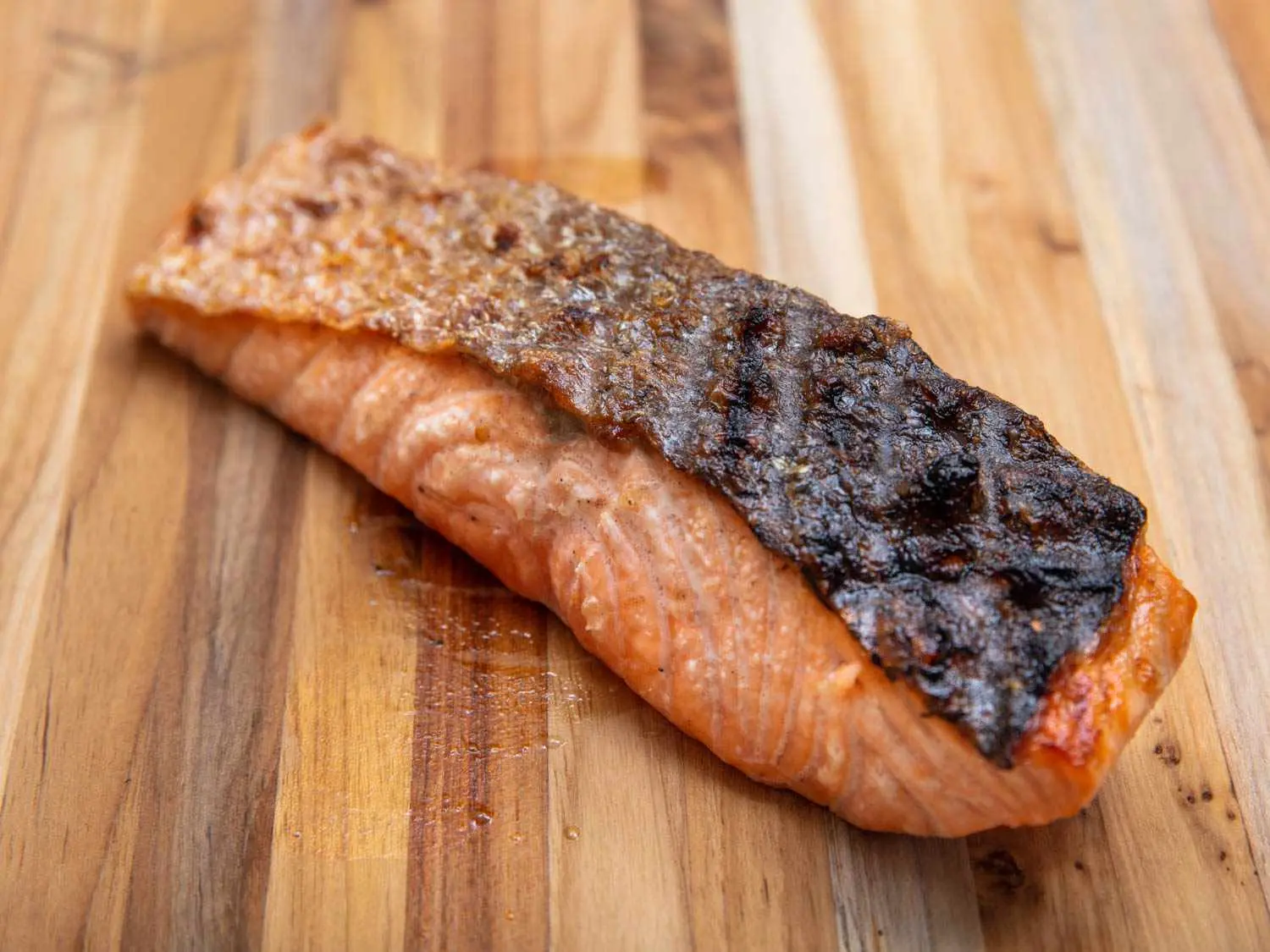Salmon is a versatile and delicious fish that lends itself well to a variety of cooking methods. One of the most popular ways to prepare salmon is on the barbecue, where the smoky flavors enhance the natural richness of the fish. In this guide, we will walk you through the process of grilling salmon fillets to perfection, from choosing the right fish to achieving the ideal level of doneness.
Choosing the Perfect Salmon Fillets
When it comes to grilling salmon, the thickness of the fillets is key. Thicker fillets allow for a better sear on the outside while ensuring the fish remains moist and tender on the inside. Look for center-cut fillets that are about one-and-a-half to two inches thick. These fillets provide ample room for browning and crisping the exterior while achieving a rare or medium cook in the center.
It is also recommended to choose skin-on fillets whenever possible. The skin acts as a natural insulator, protecting the flesh from overcooking on the grill. This allows you to spend more time crisping the skin to perfection without compromising the texture of the fish.
When it comes to sourcing salmon, you can opt for wild-caught or farm-raised. Farm-raised salmon tends to be more consistently fatty, which is beneficial when grilling over dry heat. However, if you prefer wild salmon, look for thicker and fattier fillets to increase your chances of success on the grill.
Preparing Your Grill
Before grilling your salmon fillets, it is important to properly prepare your grill. Start by preheating the grill and cleaning the grill grate. A hot and clean grate is less likely to cause the fish to stick. Use a grill brush to remove any debris or residue.
Next, oil the grill grate to further reduce the chances of sticking. This can be done by lightly brushing the grate with a neutral oil, such as canola or vegetable oil. The oil also helps in achieving a beautiful sear on the fish.
For grilling salmon fillets, it is recommended to set up a two-zone fire on your grill. This means having a hotter area for searing and crisping the skin and a cooler area for slower cooking. This setup allows for more control over the cooking process and prevents the fish from burning.
Grilling Salmon Fillets: Step by Step
Step 1: Prep the Salmon Fillets
Start by patting dry the salmon fillets on both sides using paper towels. This helps remove any excess moisture and promotes better searing on the grill. After drying, lightly rub the fillets with a neutral oil to further prevent sticking.
Step 2: Grill the Salmon Skin Side Down
When placing the salmon on the grill, ensure that the skin side is facing down. The skin acts as a protective barrier and allows for even cooking. Although there is a chance that the skin may initially stick, it should release easily once it is ready. Cooking times may vary depending on grill temperature and thickness of the fillets, but on average, it takes about four minutes to cook the skin side.
During the grilling process, you may notice the formation of white protein called albumen on the surface of the fish. This is normal and occurs due to the high heat. Simply wipe it away and continue grilling.
Step 3: Flip the Fish and Finish
When you are ready to flip the salmon fillets, exercise caution to prevent tearing the skin. Instead of using a thin metal spatula, slide the tines of a carving fork or culinary tweezers between the grill grate and the fish to gently pry the skin off. Once the skin is free, use a metal spatula to flip the fillets over.
Only cook the fish on the fleshy side for the desired internal temperature. For a rare cook, aim for an internal temperature of 110°F (43°C), medium-rare at 120°F (49°C), and medium at 130°F (54°C). If the fish risks burning on the outside before reaching the desired doneness, move it to the cooler side of the grill to finish cooking.
When done, the skin should be crackling-crisp and blistered in spots, while the interior remains moist and silky. Following these instructions will help you achieve perfectly grilled salmon fillets every time.
Frequently Asked Questions
- Will salmon stick to the BBQ?
Properly preparing the grill by cleaning and oiling the grill grate reduces the chances of the salmon sticking. Drying and lightly oiling the salmon also helps prevent it from gluing itself to the grill grate.
In Conclusion
Grilling salmon fillets on the barbecue is a fantastic way to enjoy the flavors of this delicious fish. By following these steps and choosing the right fillets, you can achieve a perfectly cooked salmon with a smoky and crispy exterior. Experiment with different seasonings and marinades to customize the flavor to your liking. Whether you're hosting a summer barbecue or simply craving a delicious seafood meal, barbecue smoked salmon is a dish that is sure to impress.
If you want to know other articles similar to Barbecue smoked salmon: the ultimate guide to grilling you can visit the Grilling category.


Related Articles